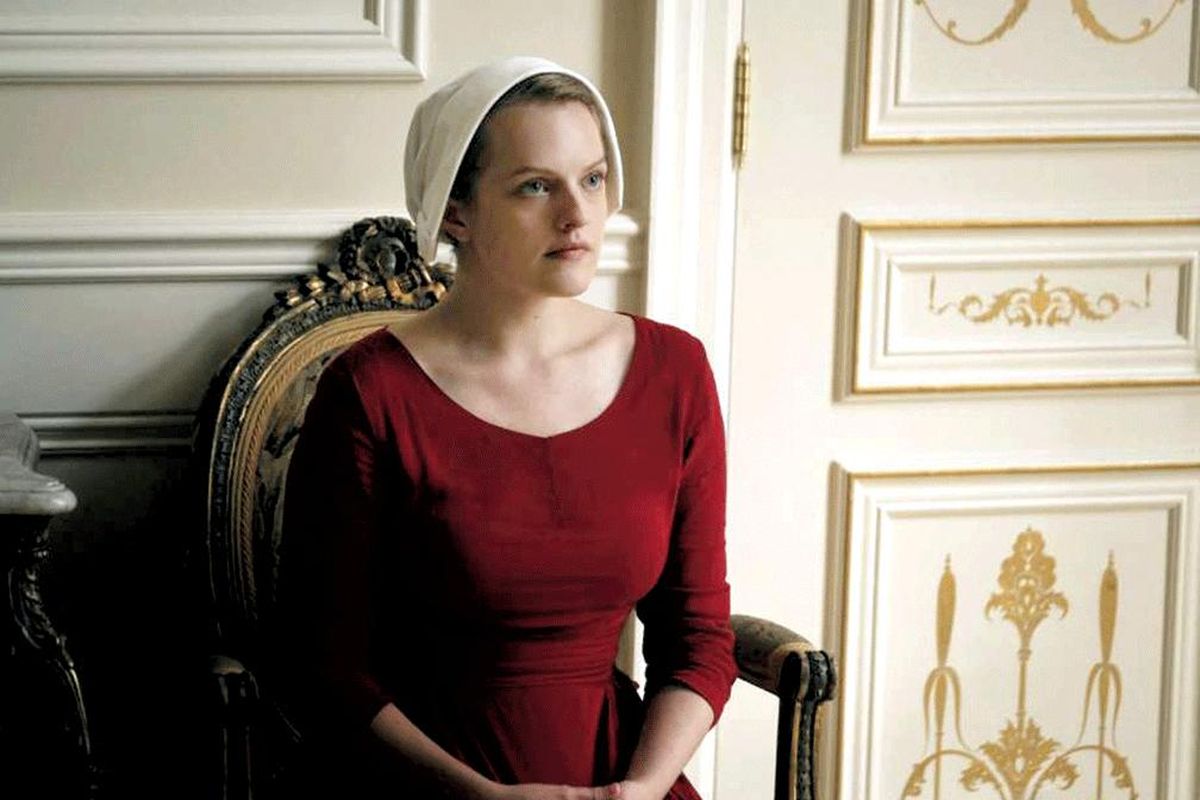For Elisabeth Moss, ‘The Handmaid’s Tale’ was a waiting game

When Offred (played by “Mad Men’s” Elisabeth Moss) steps outside of the house she lives in, everyone knows exactly what she is.
Based on Margaret Atwood’s 1985 book, Hulu’s “The Handmaid’s Tale,” which premieres Wednesday with three episodes, takes place in the former United States, where a far-right Christian sect has taken over every aspect of American life. In the newly named Republic of Gilead, environmental destruction means that birth rates are plummeting, and fertile women are at a premium. Many of them are forced to serve as surrogate wombs for powerful but infertile couples.
Offred’s husband is killed after her family is caught trying to escape to Canada; their daughter is taken to be raised by a more “suitable” couple. Offred is assigned to her commander (Joseph Fiennes); her name, literally “Of Fred,” is a derivation of his.
In between monthly mating ceremonies, she sits alone in her room, doing nothing – women are no longer allowed to read or write. She does the daily grocery shopping with Ofglen (Alexis Bledel), the handmaid down the street, both wearing the garb that befits their station: red cloaks and white, nun-like hats that shield their faces, clearly advertising to the world their place in it.
“It’s another huge right taken away, which is the right to privacy,” Moss said. “That’s something that’s taken away from these women – they don’t have the right to walk down the street and be anonymous.”
Offred’s speech is highly regulated, both in form (“Under His eye” is the most acceptable greeting) and in function (with spies everywhere, she must be very circumspect about whom she talks to, and what about). Still, she has a deep inner monologue (presented as narration in the book and voice-over on the show), which Moss found as both a challenge and an opportunity.
“For me as an actor, the most fun thing to do is try to show an outer and an inner life,” she said. “That’s what I try to do in any role; this was just the extreme of that. The outer life was as constrictive as it could possibly be, and then (showing) the inner life was as challenging as it could possibly be.”
That challenge took on an extra layer, because Offred can’t show her inner life to the people around her. “I had to figure out a way not to let the other characters in the scene see what you’re thinking or feeling, but let the audience see it,” Moss said. “That’s what keeps the audience interested – you have to let them in a little bit. Luckily, that’s something you can do with a camera, because just a blink of an eye or a twitch of the mouth is everything.”
So (at least at the end of the first three episodes) Offred waits in her bare room, wearing her red dress. She waits, and listens – and watches for a moment where she can grasp at freedom. Even though she’s in an impossible situation, she still believes in the possibility that things might change, that she might still be able to take action.
“I think that one of the messages of the book and of the show is to wake up and not sleep through it,” Moss said. “Thank God we have that hope.”